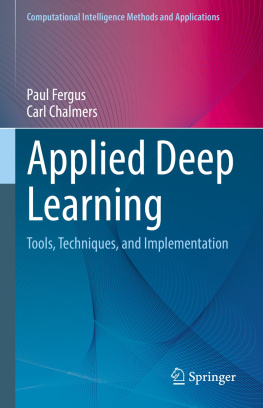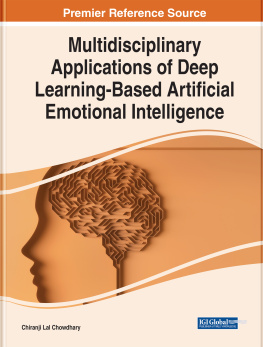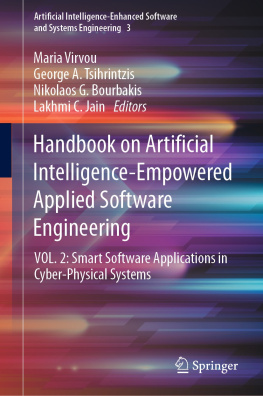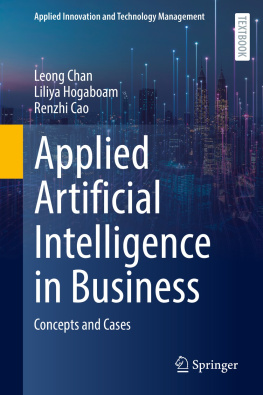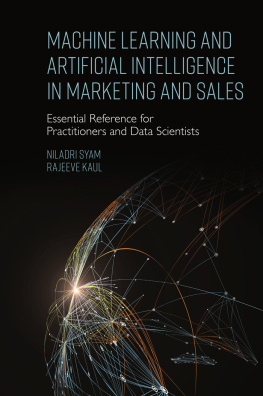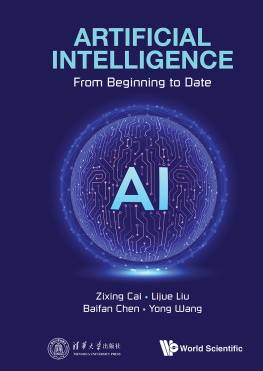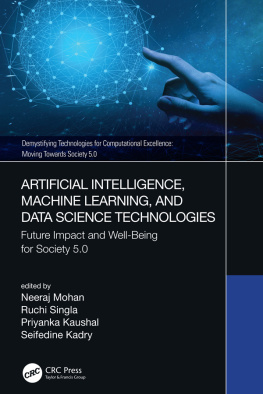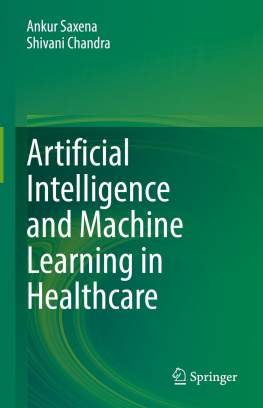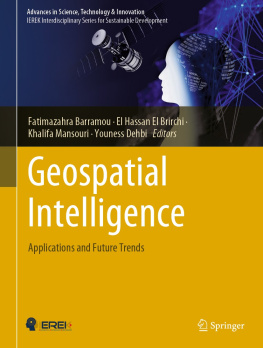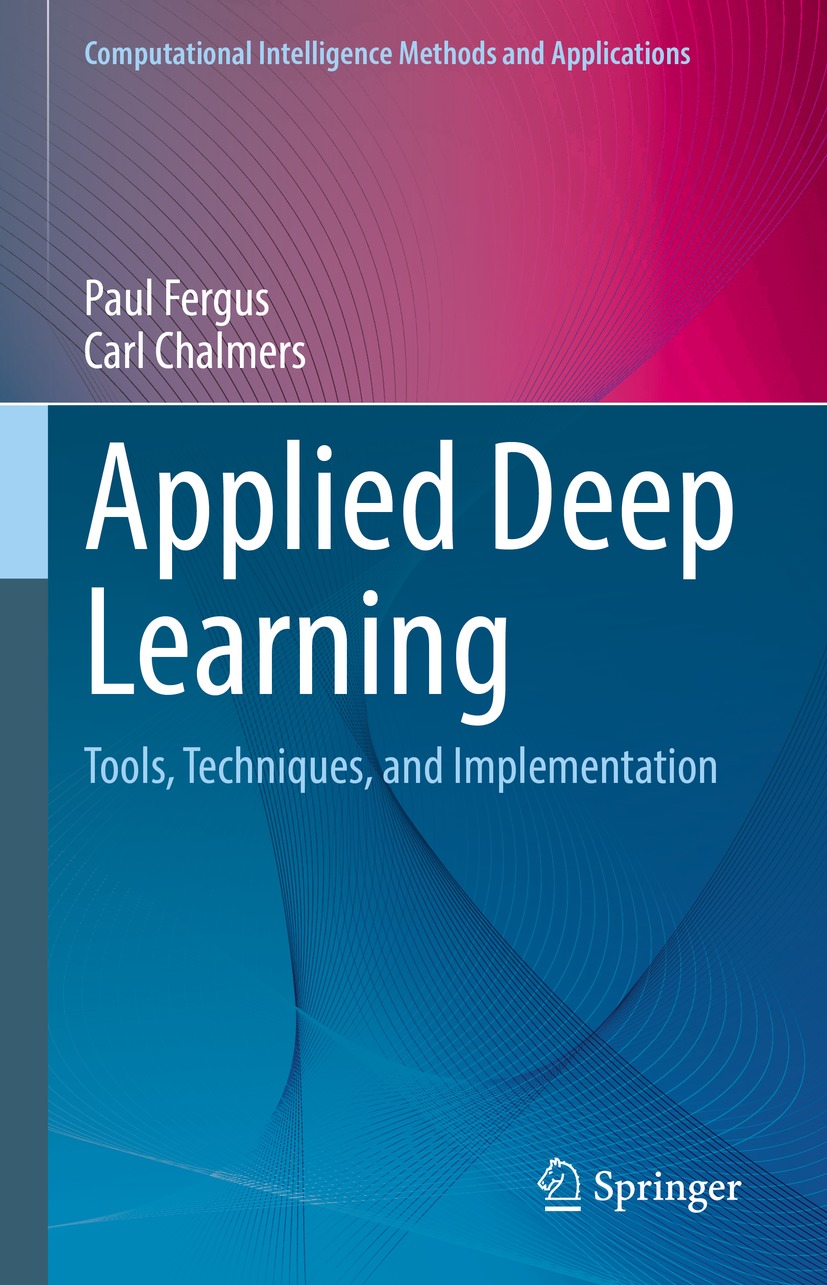Computational Intelligence Methods and Applications
Series Editor
Patrick Siarry
LiSSi, E.A. 3956, Universit Paris-Est Crteil, Vitry-sur-Seine, France
Founding Editors
Sanghamitra Bandyopadhyay
Machine Intelligence Unit, Indian Statistical Institute, Kolkata, West Bengal, India
Ujjwal Maulik
Dept of Computer Science & Engineering, Jadavpur University, Kolkata, West Bengal, India
The monographs and textbooks in this series explain methods developed in computational intelligence (including evolutionary computing, neural networks, and fuzzy systems), soft computing, statistics, and artificial intelligence, and their applications in domains such as heuristics and optimization; bioinformatics, computational biology, and biomedical engineering; image and signal processing, VLSI, and embedded system design; network design; process engineering; social networking; and data mining.
Paul Fergus
School of Computer Science and Mathematics, Liverpool John Moores University, Liverpool, UK
Carl Chalmers
School of Computer Science and Mathematics, Liverpool John Moores University, Liverpool, UK
ISSN 2510-1765 e-ISSN 2510-1773
Computational Intelligence Methods and Applications
ISBN 978-3-031-04419-9 e-ISBN 978-3-031-04420-5
https://doi.org/10.1007/978-3-031-04420-5
Springer Nature Switzerland AG 2022
This work is subject to copyright. All rights are reserved by the Publisher, whether the whole or part of the material is concerned, specifically the rights of translation, reprinting, reuse of illustrations, recitation, broadcasting, reproduction on microfilms or in any other physical way, and transmission or information storage and retrieval, electronic adaptation, computer software, or by similar or dissimilar methodology now known or hereafter developed.
The use of general descriptive names, registered names, trademarks, service marks, etc. in this publication does not imply, even in the absence of a specific statement, that such names are exempt from the relevant protective laws and regulations and therefore free for general use.
The publisher, the authors and the editors are safe to assume that the advice and information in this book are believed to be true and accurate at the date of publication. Neither the publisher nor the authors or the editors give a warranty, expressed or implied, with respect to the material contained herein or for any errors or omissions that may have been made. The publisher remains neutral with regard to jurisdictional claims in published maps and institutional affiliations.
This Springer imprint is published by the registered company Springer Nature Switzerland AG
The registered company address is: Gewerbestrasse 11, 6330 Cham, Switzerland
Preface
Applied Artificial Intelligence: Mastering the Fundamentals, is aimed at students, academics and industry practitioners to provide them with a conceptual overview of the field. Students can use this book to supplement undergraduate, postgraduate and doctoral studies. Academics who are new to the area can utilise this book to gain a broad understanding of Artificial Intelligence while seasoned academics can use the book as a point of reference. In industry, managers will find this book useful for gaining an understanding of Artificial Intelligence and where it could be integrated into existing business processes. For those primally focused on development and implementation, the book along with its references provides a strong foundation for anyone moving into Artificial Intelligence development. The book discusses key frameworks such as TensorFlow, Dask, RAPIDS, Docker and Kubernetes. What makes this book accessible to a broad range of readers is the conscious decision to minimise both mathematical and programming notation and focus more on the core and practical concepts of Artificial Intelligence and its deployment. Once the reader has a good grasp of the concepts, understanding the theoretical principles becomes much easier.
The first chapter of this book will introduce the field of Artificial Intelligence, Machine Learning and Deep Learning. In the first section following the introduction (Chaps. ) will discuss the deployment and hosting of Machine Learning models within enterprise environments using frameworks such as TensorFlow Serving, Docker and Kubernetes.
Paul Fergus
Carl Chalmers
Liverpool, UK
Acknowledgements
Paul Fergus:
There have been many contributing factors associated with the completion of this book, the most important being all the people who have helped me. I would first like to thank Dr. Carl Chalmers for his unwavering passion and commitment during the writing of this book. He has had to endure many grumpy moments with me over the last year or so. I would like to thank the Springer team for their help and support and for the excellent guidance they have given us during this project. I would especially like to thank my wife Lorna Bracegirdle for putting up with me over the years and for the support she has given me. I would also like to thank my son Benjamin Fergus, my step-daughter Sasha-Lei Bracegirdle, my mother-in-law Lillian Bracegirdle and my father-in-law Brian Bracegirdle, who sadly passed away before the book was completed, for standing by me and supporting me when I needed it. Lastly, I would like to thank my dog Milo who loves me unconditionally and always makes me laugh when I need it.
Carl Chalmers:
I would like to thank my wife Rachel and my two sons Joshua and Toby for their patience and support in writing this book. Without their support and encouragement, it would have been impossible to complete. I would also like to thank my friend and colleague Professor Paul Fergus for his support, wisdom and friendship throughout the entire processes. I would also like to thank the inspirational researchers mentioned throughout this book for their tireless dedication to the field of Artificial Intelligence.
Contents
Part I Introduction and Overview
Part II Foundations of Machine Learning
Part III Deep Learning Concepts and Techniques
Part IV Enterprise Machine Learning
List of Figures
List of Tables
Part I Introduction and Overview
Springer Nature Switzerland AG 2022
P. Fergus, C. Chalmers Applied Deep Learning Computational Intelligence Methods and Applications https://doi.org/10.1007/978-3-031-04420-5_1
1. Introduction
Paul Fergus
(1)
School of Computer Science and Mathematics, Liverpool John Moores University, Liverpool, UK
We are now beginning to see the widespread use of Artificial Intelligence (AI) in all walks of life. From Alexa in the home to the promise of driverless cars in the future. Many aspects of AI have transitioned from a purely theoretical field to an applied one. Therefore, unlike traditional university courses, this book provides an introductory guide to those wishing to pick up AI and apply it in solving real-world problems. Never before have we seen so many frameworks surrounding the application of AI. With many large organisations such as Google, Microsoft, IBM, Facebook and NVidia offering a wide range of AI technologies, the race is on to capture market share as we continue to see the uptake of AI. This means that businesses both small and large are increasingly looking to use these technologies to start developing solutions to solve their own unique problems. This book is timely as its underlying goal is to bridge the gap between the well-supported frameworks that organisations provide and anyone with a desire to learn applied AI.

